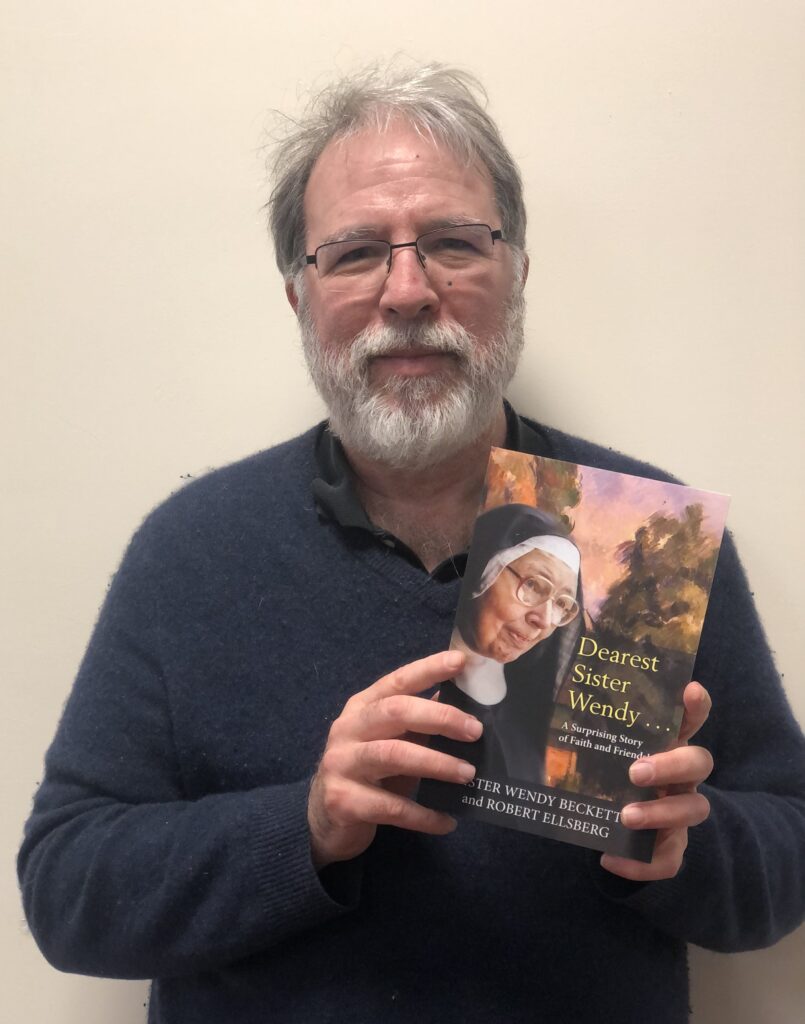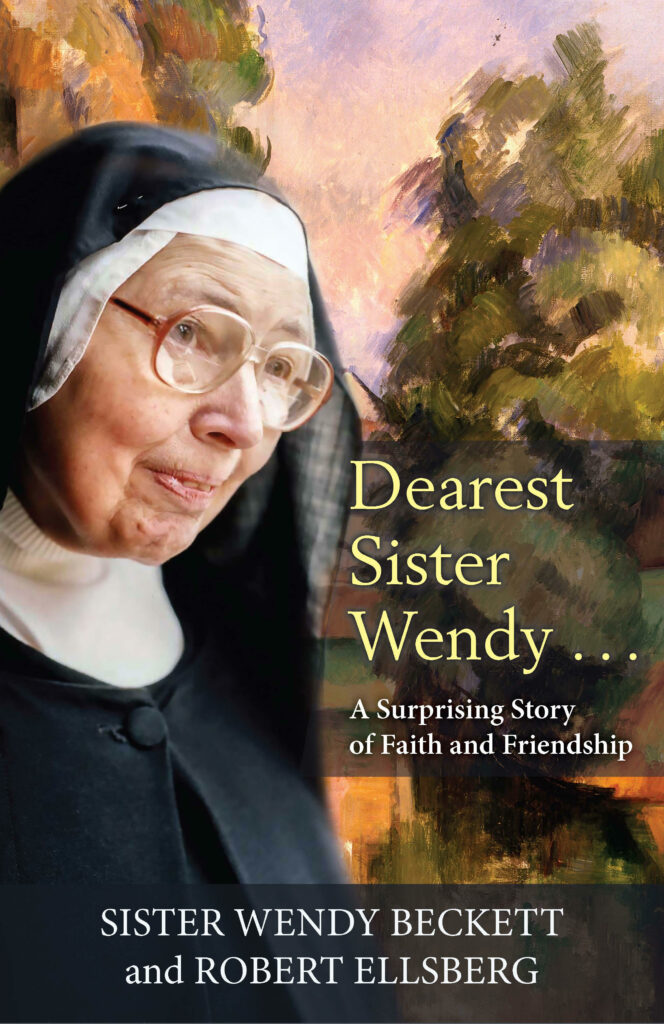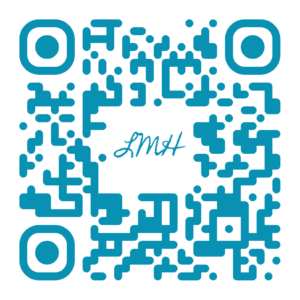Today, I continue my ongoing series of conversations with published authors as I’m joined by Robert Ellsberg, whose new book Dearest Sister Wendy: A Surprising Story of Faith and Friendship offers a unique and touching insight into the spiritual life of a woman whose work touched so many of us. By sharing their touching correspondence, Ellsberg offers us not only an insight into this gentle spiritual giant, but also an invitation to see the divine in the everyday world around us. In a letter that Sister Wendy penned to Robert on August 24, 2016, about his calling to write biographies of saints.
“Dearest Robert, I can’t but feel that a life spent immersed in the holiness of people’s lives must have an effect on your own life. It is clear when you write that you feel the wonder of their open-hearted response to grace. And this wonder must also awaken in you the same desires.”
Sister Wendy, excerpted from Dearest Sister Wendy, page 55
I can’t help but think that for those of us who have been generously invited to journey with Robert and Sister Wendy through this book, there are similar opportunities! I hope you enjoy our conversation and urge you to come to know Sister Wendy Beckett through this remarkable work. Lisa

Q: Congratulations on the publication of Dearest Sister Wendy: A Surprising Story of Faith and Friendship. Would you please briefly introduce yourself to our community of readers?
I am the publisher of Orbis Books, where I have worked for 35 years. My life journey was deeply impacted by the five years I spent working with Dorothy Day at the Catholic Worker in the late 1970s, before her death in 1980. Since then I have edited five volumes of her writings, including her diaries and selected letters. That encounter also stimulated my interest in saints, and I have written numerous books about holy people, including All Saints, The Saints’ Guide to Happiness, and A Living Gospel. For over ten years I have contributed a daily reflection on “Blessed Among Us” for Liturgical’s Give Us This Day.

Q: So many of us have come to know and love the work of Sister Wendy, who became such a beautifully iconic but also ironic media presence. In the book, you share how you first connected with her. Could you say a few words about this?
This book is drawn from an exceptionally deep and intimate correspondence I shared with Sister Wendy in the last three years of her life. This almost daily exchange of emails came as a surprise for both of us since I had previously been exchanging more casual notes with her for almost ten years. Like most people, I first learned of her through her television program about art, and we became friendly after she reached out to request some books for the monastery where she lived. Later, at Orbis, I published several of her own books. But she was always careful to maintain boundaries. As a hermit, she believed she was called to solitude, and that too much communication “without a real purpose” was inconsistent with her vocation. And yet, in some mysterious way, she evidently came to believe that our communication did have a “real purpose.” The relationship that ensued was like nothing either of us had experienced before.
Q: How did you come to the fortuitous conclusion to share some of your letters in this book?
I had encouraged Sister Wendy to write more about her own spiritual journey and interior life. She dismissed this as of no interest to anyone. But as I shared more of my own story and experiences I found that she began to answer in kind. It was Sister Wendy who suggested, after several months, that the book I had suggested might be “cobbled together” from our correspondence. She recognized that such a book was not just about her—but it was also about the insights and the deep listening and heart-to-heart communion between two quite dissimilar people drawn by their love of God. Sister Wendy encouraged me to see the signs of grace hidden in my own spiritual journey, including the joys and sorrows, as well as in the day-to-day encounters and tasks of my daily life. I, in turn, encouraged her for perhaps the first time to look back on her own life and to reflect on the ways that her own distinctive personality, as well as her deep vocation, had converged in the life she had found, living as a hermit on the grounds of a Carmelite monastery.
Join @lisahendey in conversation with @RobertEllsberg about his new @OrbisBooks work Dearest Sister Wendy. Their compelling correspondence opens a window into Sister Wendy's life and spirituality and invites us to consider our own! Share on XQ: Your work and faith journey are indelibly tied to a woman I believe will be a canonized saint someday: Dorothy Day. How has your spiritual friendship with Sister Wendy complimented what you learned from Dorothy Day?
I met Dorothy Day when I was 19. Within a few months, she invited me to be the managing editor of the Catholic Worker paper, thus, in some mysterious way, pointing me in the direction of my life’s work and vocation, not just as an editor but as her editor. Sister Wendy was fascinated by Dorothy, though it would be difficult to imagine two more different people: Dorothy, living among the poor, engaged in the struggles for peace and justice, and Sister Wendy, a consecrated hermit. And yet there was a deep underlying connection. Both of them were incredibly attentive to God’s presence and mercy. For Sister Wendy, talking about art was a way of drawing people toward God, the source of beauty. But Dorothy, too, living amidst urban squalor, also had a keen appreciation for signs of beauty—in nature, in acts of love, in the quest for peace. She liked to quote Dostoevsky’s line, “The world will be saved by beauty.” She believed that despite all the hardship and suffering in the world, we had to practice the discipline of noticing and responding to God’s beauty and goodness in our everyday life. Both of them believed that paying attention to beauty could enlarge our souls and thus help toward healing the world.
Q: In your correspondence and the compilation of this book, what were a few things about Sister Wendy that might be unknown to those who knew her as the “art nun”?
For Sister Wendy, her public forays into the art world were a temporary sideline from her life as a contemplative. It might not be surprising to people that she was a mystic, who rose each night at 10 p.m. and spent the rest of the night in silent prayer until Mass the next morning. But people might be surprised, in light of her very traditional-looking habit, to discover how remarkably open-minded she was on so many topics. Both of us shared a love for Pope Francis, and wondered at the opposition his social positions and his emphasis on mercy arouse in so many. She was interested in everything in my life—my work, my friends, my accounts of travels, books and movies, my health, even my dreams. She was able to perceive God’s presence in all of this. But what was surprising to me, was how much she herself evolved and grew in the course of our correspondence—examining her own life story, with all its twists and turns, re-examining long-held judgments and opinions. No doubt she was a holy, singular lover of God, but even at the end of her life she was learning to love in new ways.
Q: What are your hopes for this work?
Sister Wendy’s hope in everything she wrote or did was that people would come to know and love Jesus more deeply. And I think she would be hopeful for the same with this book. As for me, I am happy at the thought that people will join me in knowing and loving this extraordinary woman. But my deepest hope is that in reading the book people will find themselves looking at their own lives in a new way—discovering the gospel story that has all along been written in their own encounters, their experiences of love and sorrow, the times of doubt as well consolation. “This is heaven,” Sister Wendy told me. She wanted other people to see and live out of this insight, and I think this book may help people to do that.
Q: Have you had any sense that the beautiful letters you exchanged might someday become part of a cause for canonization?
The meaning of holiness was an ongoing topic we discussed, reflecting the traditional teaching that all Christians are called to be saints. But along with figures like Therese of Lisieux, or her favorites, Julian of Norwich and Elizabeth of the Trinity, we enjoyed talking about people like Thomas Merton or Henri Nouwen, who are not likely to be canonized but served as spiritual explorers, perhaps inspiring others to respond more faithfully to their own vocation. I don’t know whether Sister Wendy is likely to be named a saint—but I think reading this book may enlarge people’s understanding of what it means to be a saint, and to see the connection between the call to holiness and the longing for happiness.
Q: Are there any additional thoughts or comments you would like to share?
Part of the context of our correspondence was Sister Wendy’s knowledge that she was nearing her death. She suffered from a hardening of her lungs that made every breath increasingly difficult. Our correspondence, and the relationship that emerged, was literally the final work of her life—sharing lessons in seeing, loving, and letting go. I am so grateful that she entrusted herself and these lessons to me, so that I could share them with others.
Find Dearest Sister Wendy: A Surprising Story of Faith and Friendship at Orbis Books, Amazon or your local retailer.
